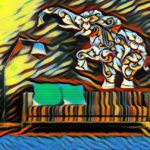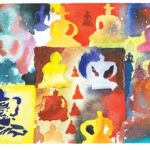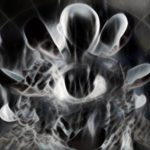Recent Comments
- Scott on Aloneness
- Chodpa on The Place where the Primordial Speaks
- Chodpa on The Cuckoo of Presence
- Afzar on Bodhidharma’s teacher, Prajnatara
- Vajragoni on Audiobook is released
-
Recent Posts
Categories
- A Darkness Visible
- A Docetic Assessment
- A Mystical Odyssey through the Sagathakam
- AI Creations
- Akṣayamatinirdeśasūtra
- Akṣhobhya’s Pure Land
- Ālaya-vijñāna
- Anūnatvāpūrṇatvanirdeśaparivarta
- Ariyapariyesanā Sutta
- Ascending the Noble Mountain of Primordial Perfection
- Asceticism
- Ashtavakra Gita in Light of the Unborn
- Audiobook
- Bankei Zen
- Beyond the Ascent
- Beyond the Rainbow Body
- Black Dragon Eye Mandala
- Bodhicitta
- Buddhadharma
- Buddhism’s Black Holes
- Buddhist Anecdotes
- Buddhist Hells
- Buddhist Meditations on the Tarot
- Chuang-Tzu
- Contemporary Musings
- Ḍākiṇī
- Dāsbodh
- Dharmakaya Abbey
- Dharmakaya Stick
- Divine Revelation
- Doctrine of the Void
- Dust Contemplation
- Ekacitta: Advanced Studies in Dark Zen
- Entry into the Dharmadhātu
- Eremitical Dhyani Meditations
- Exploring the Book of Revelation
- Gnostikos
- Hsin Hsin Ming
- Journey to the Center of the Mind
- Karma and Rebirth
- Korean Sŏn
- Kulayarāja Tantra—The Motherly Buddha
- Little Office of Our Lady of the Void
- LSD and Psychedelic Buddhism
- Māṇḍukya Kārikā
- Mañjuśrī Teaches Prajñāpāramitā
- Māra and Satan
- Meister Eckhart
- Mud and Water: Bassui Zen
- Mystagogia
- Nirvana
- Notes from the Iron Stupa
- Nothingness in Nāgārjuna and John of the Cross
- Obscure Religious Cults
- Preparation for the Afterlife
- Primordial Qigong
- Reflections on the Saṃdhinirmocana Sūtra
- Spirituality
- Springtime with Tozen
- Terma: A Mind Film by Vajragoni
- The Afterglow
- The Awakening of Faith
- The Bhagavad Gita
- The Book of Bodhi
- The Cloud of Unknowing in Light of the Unborn
- The Diamond Sutra
- The Divine Ātman
- The Divine Liturgy of Vajrasattva
- The Doctrine of Awakening
- The Dragon Mind of Zen Tarot
- The Elucidation of Consciousness
- The Experience of No-Self
- The Great Perfection of the Unborn Mind: A Book of Privy Counseling
- The Heart Sutra
- The Hermit's Den
- The Khaggavisāṇa Sutta: A Rhinoceros Horn
- The Lankavatara Sutra
- The Lankavatarian Book of the Dead
- The Lion's Roar of Queen Śrīmālā
- The Lotus Sutra
- The Mahāparinirvāṇasūtra
- The Naga Chronicles
- The Platform Sutra
- The Ratnagotravibhāgaśāstra
- The School of the Spirit
- The Secret Golden Light of the Unborn
- The Soul
- The Śūrańgama Sūtra
- The Sutra of Primordial Enlightenment
- The Tathāgatagarbhatārā Tantra
- The Udāna
- The Unborn Mind Mythos
- The Unborn Mind Sessions
- The Unborn Odyssey: A Novel
- The Vajrasamādhi Sutra
- The Vimalakirti Sutra
- The Yogasūtras of Patañjali
- The Zen Teaching of Bodhidharma
- The Zen Teaching of Instantaneous Awakening
- The Zen Teachings of Huang Po
- Theologia Mystica
- Tozen Teaching
- Tsung-mi: An Intimate Study
- Unborn I Ching
- Unborn Light Reiki
- Uncategorized
- Vasubandhu and the Absolute
- Wisdom from the Masters
- Wordsworth and Zen
- Yoga of the Manomayakāya
- Zen
- Zuowang
Archives
- October 2024
- August 2024
- February 2024
- January 2024
- December 2023
- November 2023
- October 2023
- September 2023
- August 2023
- July 2023
- June 2023
- May 2023
- April 2023
- March 2023
- February 2023
- January 2023
- December 2022
- November 2022
- October 2022
- September 2022
- August 2022
- May 2022
- April 2022
- March 2022
- February 2022
- January 2022
- December 2021
- November 2021
- October 2021
- September 2021
- August 2021
- May 2021
- April 2021
- March 2021
- February 2021
- January 2021
- December 2020
- November 2020
- October 2020
- September 2020
- August 2020
- May 2020
- April 2020
- March 2020
- February 2020
- January 2020
- December 2019
- November 2019
- October 2019
- September 2019
- August 2019
- June 2019
- February 2019
- January 2019
- December 2018
- October 2018
- August 2018
- April 2018
- March 2018
- February 2018
- January 2018
- December 2017
- November 2017
- October 2017
- September 2017
- August 2017
- May 2017
- April 2017
- March 2017
- February 2017
- January 2017
- December 2016
- November 2016
- October 2016
- September 2016
- August 2016
- July 2016
- May 2016
- April 2016
- March 2016
- February 2016
- January 2016
- December 2015
- November 2015
- October 2015
- September 2015
- August 2015
- July 2015
- June 2015
- May 2015
- April 2015
- March 2015
- February 2015
- January 2015
- December 2014
- November 2014
- October 2014
- September 2014
- August 2014
- May 2014
- April 2014
- March 2014
- February 2014
- January 2014
- December 2013
- November 2013
- October 2013
- September 2013
- August 2013
- May 2013
- April 2013
- March 2013
- February 2013
- January 2013
- December 2012
- November 2012
- October 2012
- September 2012
- August 2012
- May 2012
- April 2012
- March 2012
- February 2012
- January 2012
- December 2011
- November 2011
- October 2011
Meta
Monthly Archives: December 2018
Why Birth, Why Death?

Having now covered a healthy dose of this series on the Sagathakam, you may have observed that many of these gathas (verses) are repetitious in nature. It’s as if the Sagathakam is one long spiritual exercise for students of the Lanka and that elements of its composition was not composed by just one scribe, but several. Since the Sagathakam basically covers the most prominent themes found within the Lanka, these different scribes composed many variations based on the same themes. In this fashion, the diligent and astute adept would be sure to memorize what was essential to the integrity of the Lanka as a whole.
Posted in A Mystical Odyssey through the Sagathakam
Tagged Birth, Death, deathlessness, imagelessness, Parinishpanna
1 Comment
Nāgāhvaya

159-161. (Cleary]: With five fives plus five, and nine flaws, covered with nails, teeth, and hair, one is born, quivering. Like a maggot when newborn, the human being is as if awakened from sleep; form becomes visible by means of the eye, development proceeds from performance. With a combination of the palate, lips, and oral cavity, conceived by mental construction, human speech issues like that of a parrot, by false imagination.
Posted in A Mystical Odyssey through the Sagathakam
Tagged Mahayana, Nāgāhvaya, Tathāgatabhadra
Leave a comment
I Can See Clearly Now

- Imagining by this imagination, self-substance is conceived to rise by the conditions of origination (pratyayabhava); an external world is recognized in distortion, there is [in fact] no such external world, but just the Mind.
Pratyayabhava: from the root pratyaya:
paccaya (Pāli, condition; Skt., pratyaya). A condition, or that on which something depends. The *Abhidharma arrived at a comprehensive list of 24 kinds of conditions. These are described in the *Paṭṭhāna, the last book of the *Theravāda Abhidharma. The analysis is thought to encompass all conceivable relationships between phenomena, whether mental or physical. (Oxford Dictionary of Buddhism)
Turning-back Home

- [Cleary]: The appearance of objects to humans is thought; thought expresses what is imagined. There is no object; it is only thought; without imagination, one is freed.
Close in conjunction with the motto of a Lankavatarian: What the mind focuses on determines its reality. The Dhammapada also declares, Mind precedes all mental states. Mind is their chief; they are all mind-wrought. If with an impure mind a person speaks or acts suffering follows him like the wheel that follows the foot of the ox. With an impure-mind (harbinger of thoughts and creator of all images) it all boils down to the stuff that dreams are made of vs. Mind-only “preceding” all mental aberrations, henceforth no-thing perceivable or conceivable. Ergo, minus the image-maker liberation is won!
Namen

- The constructing of appearances (nimitta) created by delusion is the characteristic mark of Paratantra (dependence) knowledge; the giving of names to those appearances [regarding them as real individual existences] is characteristic of the imagination.
- When the constructing of appearances and names, which come from the union of conditions and realities, no more takes place, we have the characteristic mark of perfected knowledge (parinishpanna).
This is in reference to the five-dharmas: name, appearance, discrimination, right knowledge, and suchness. False-imagination gives rise to discrimination, declaring such ideations as child, soap, etcetera, thus given a name-appellation. What follows is an appearance that is declared after the naming. In short it’s all an exercise in control—once something is named, one has the power over it. Much like during exorcisms when the priest-exorcist demands the demon give its name, after which it can be dispelled. Ultimately, though, the Lanka teaches that by “Right-Knowledge”, “when names and appearances are seen as unobtainable owing to their mutual conditioning, there is no more rising of the Vijnanas, for nothing comes to annihilation, nothing abides everlastingly.” Afterwards, what remains is quiescent-suchness. The Lanka encapsulates all this as such:
Minus the Creator God

- [Cleary]: Imagination, what is imagined, and imagination’s action, bondage, what is bound, and being bound—these six are reasons for liberation.
The number 6 is most prominent in Buddhism, witness the six paramitas, the six realms of impermanence, and even six kinds of temperament (lustful, hateful, ignorant, discursive, devout, and intellectual). The Lanka here then strips down the faculty of imagination in five modes: the faculty itself, what images it produces, the resulting [action], the result being bondage, and hereafter what is declared bound. Liberation here points towards shutting the faculty down.
Posted in A Mystical Odyssey through the Sagathakam
Tagged Creator God, ego-soul, Tozen
Leave a comment
A Phantom Elephant

- If such errors were granted, it would not be possible to talk about the non-existence of self-substance; as the nature of reality is erroneously understood, there is something perceived where there is really no self-substance; all is indeed non-existent.
When the Lanka uses the term substance, it does not denote the stuff that makes up the apparent base of the material world. It has more significant value as an esoteric-metaphor reflecting the unconditioned Mind. The real-stuff of the Mind-set is an imageless substance. This is why Huang Po once warned not to utilize the Mind-set to conceptualize, in essence being encased in formal-ideations, but rather to stay perpetually-present to the Substance of the One and Undivided Unborn Buddha Mind. As the Zennist eloquently writes:
The self-nature of all things

Painting by Michael Newhall
- (Chapter II, v.10) Hearing his words the Buddha, the best knower of the world, looking over the whole assembly, spoke to the son of the Sugata thus:
- (Chapter II, v. 174) The Sankha and the Vaiseshika philosophers teach birth from a being or from a non-being; all that are proclaimed by them are inexplicables.
Sankha: Samkhya or Sankhya (Sanskrit: सांख्य, IAST: sāṃkhya) is one of the six āstika schools of Hindu philosophy. It is most related to the Yoga school of Hinduism, and it was influential on other schools of Indian philosophy. … Samkhya is strongly dualist. (Wiki)
The Passage to Spiritual-Sovereignty

- In self-realisation itself there are no time [-limits]; it goes beyond all the realms belonging to the various stages; transcending the measure of thought, it establishes itself as the result [of discipline in the realm] of no-appearance.
Self-realization: another dominant term that lies at the very heart of the Lanka—indeed, as Suzuki writes, its principle-thesis. This is also the principle reason why Bodhidharma handed over his copy of the Lanka to Huike, signifying the all-importance of awakening that inner-perception, the process wherein Mind awakens to the truth of ITs inner recesses and thus comes to the realization that all that is seen is seen of the Mind Itself. Suzuki develops this further within the context of the Lanka itself:
The Astounding Eighth Stage

- Mind (citta*) is the Alayavijnana, Manas is that which has reflection as its characteristic nature, it apprehends the various sense-fields, for which reason it is called a Vijnana.
Citta: citta principally means Mind. However, Suzuki breaks this down even more specifically and it is warranted that we note this:
Posted in A Mystical Odyssey through the Sagathakam
Tagged Akanishṭha, bhumi, citta, eighth stage, imagelessness, Maheśvara
Leave a comment
